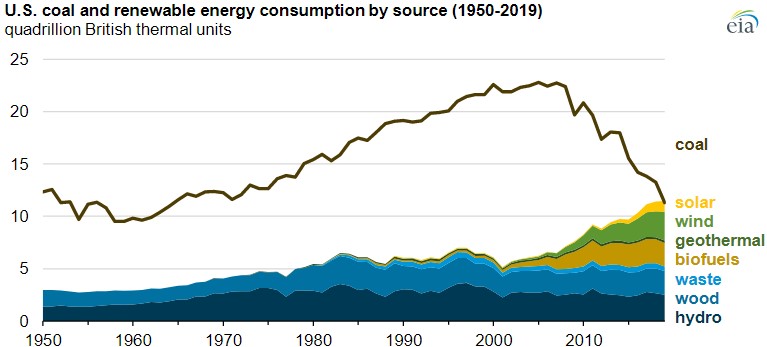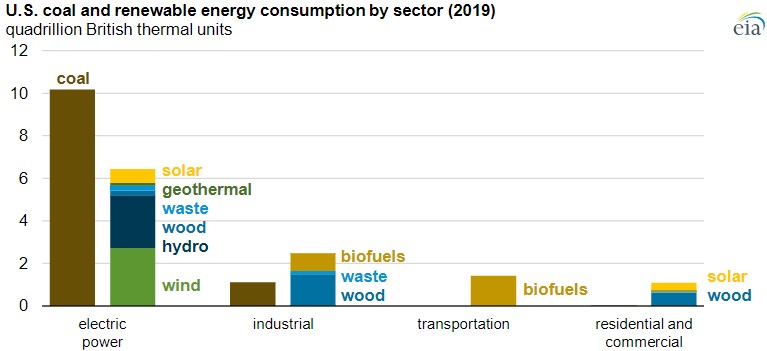
135-year-long streak is over: US renewable sources topped coal in 2019
Including wood and biofuels across all sectors, coal fell short last year.
by Scott K. JohnsonTwo weeks ago, we covered a US Energy Information Administration (EIA) projection that renewable wind, solar, and hydroelectric power would top coal for total electricity generation in 2020. That was particularly believable given that renewables had beat coal in daily generation every day going back to March 24. As it happens, that daily streak finally came to an end this week, as coal picked up amid rising demand and a couple of low days for wind. Coal likely topped renewables on Tuesday, although it’s possible that rooftop solar generation (not included in EIA’s daily data) extended the run until Wednesday.
But the EIA also released some numbers Thursday that highlight a related and interesting piece of trivia: if you include energy use beyond the electric sector and all types of renewable energy, renewables actually beat out coal last year. And to find the last time that was true, you have to go all the way back to the 1880s.

This comparison includes biofuels (like ethanol and biodiesel), wood-burning, and waste incineration or landfill gas. And beyond electricity, it adds in energy used by industry, residential and commercial buildings, and transportation—uses where coal plays little or no role.
To get coal burned in an industrial process to stack up fairly against electrons pushed by a solar photovoltaic panel, EIA converts everything to BTUs. That’s easy for anything that combusts—it’s the heat produced. For wind, hydroelectric, and solar, kilowatt-hours of electricity are converted to BTUs of heat based on the current average heat-to-electricity ratio of all combustion power plants. (In other words, it’s the average amount of combustible fuels that would be required to produce the same amount of electricity.)

When coal last came out on the losing side of this comparison, the steam engine was still on the rise and the US was just starting to move on from “peak wood.” The EIA’s post notes that the first hydroelectric dams in the US were also coming online in the 1880s.
The biggest factor returning 2019 to a head-to-head loss for coal is its precipitous decline on the grid (which accounts for 90 percent of coal use). The EIA numbers show that coal consumption was fully 15-percent lower than in 2018. The total consumption of all renewables ticked upward one percent as a result of growing wind and solar. Those two trends finally met last year, showing that coal is going the way of wood—barring a surprising steampunk revolution.